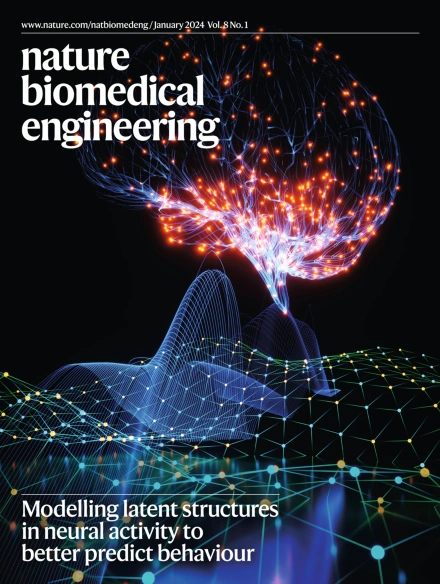Bead-based approaches for increased sensitivity and multiplexing of CRISPR diagnostics.
IF 26.8
1区 医学
Q1 ENGINEERING, BIOMEDICAL
引用次数: 0
Abstract
CRISPR-based diagnostics have emerged as a promising tool for fast, accurate and portable pathogen detection. There has been rapid progress in pre-amplification processes and CRISPR-related enzymes used in these approaches, but the development of reporter systems and reaction platforms has lagged behind. In this paper, we develop bead-based techniques to address these gaps. First, we develop a novel bead-based split-luciferase reporter system with up to 20× sensitivity compared with standard fluorescence-based reporter design in CRISPR diagnostics. Second, we develop a highly deployable, bead-based platform capable of detecting nine distinct viral targets in parallelized, droplet-based reactions, with sensitivity reaching as low as 2.5 copies per µl of input RNA. We demonstrate the enhanced performance of both approaches on synthetic and clinical sample sensitivity, speed, multiplexing and deployability.提高CRISPR诊断灵敏度和多路复用的基于珠子的方法。
基于crispr的诊断已经成为一种快速、准确和便携式病原体检测的有前途的工具。在这些方法中使用的扩增前过程和crispr相关酶进展迅速,但报告系统和反应平台的发展滞后。在本文中,我们开发了基于头部的技术来解决这些差距。首先,我们开发了一种新的基于珠状分裂荧光素酶的报告系统,与CRISPR诊断中基于荧光的标准报告系统设计相比,其灵敏度高达20倍。其次,我们开发了一个高度可部署的、基于珠状体的平台,能够在并行的、基于液滴的反应中检测9个不同的病毒靶标,灵敏度低至每µl输入RNA 2.5拷贝。我们展示了两种方法在合成和临床样品灵敏度、速度、多路复用和可部署性方面的增强性能。
本文章由计算机程序翻译,如有差异,请以英文原文为准。
求助全文
约1分钟内获得全文
求助全文
来源期刊

Nature Biomedical Engineering
Medicine-Medicine (miscellaneous)
CiteScore
45.30
自引率
1.10%
发文量
138
期刊介绍:
Nature Biomedical Engineering is an online-only monthly journal that was launched in January 2017. It aims to publish original research, reviews, and commentary focusing on applied biomedicine and health technology. The journal targets a diverse audience, including life scientists who are involved in developing experimental or computational systems and methods to enhance our understanding of human physiology. It also covers biomedical researchers and engineers who are engaged in designing or optimizing therapies, assays, devices, or procedures for diagnosing or treating diseases. Additionally, clinicians, who make use of research outputs to evaluate patient health or administer therapy in various clinical settings and healthcare contexts, are also part of the target audience.
 求助内容:
求助内容: 应助结果提醒方式:
应助结果提醒方式:


